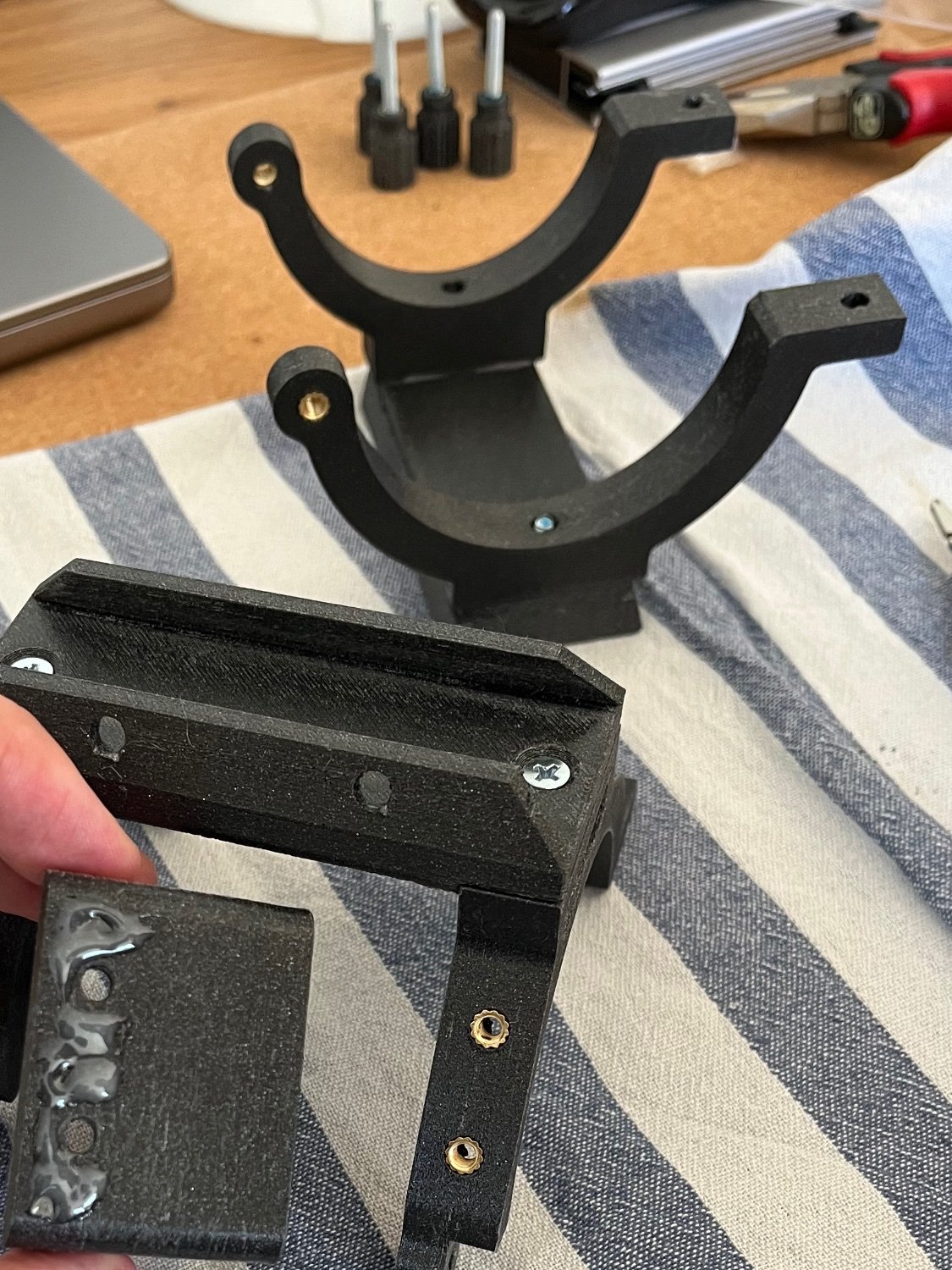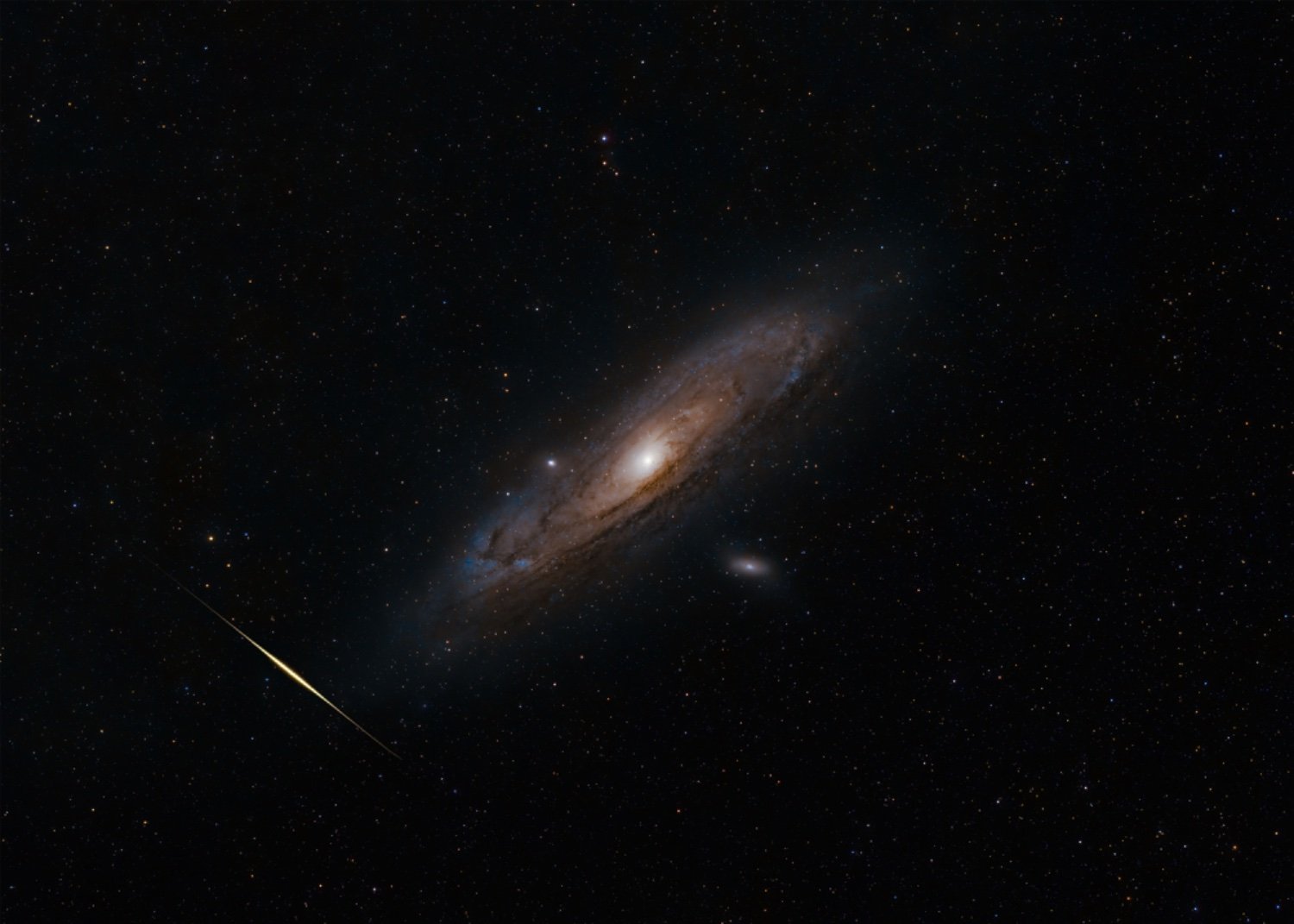Glueing and screwing the parts:

One result shot with this mount (and many other accessories):

3DPrinting is a place where makers of all skill levels and walks of life can learn about and discuss 3D printing and development of 3D printed parts and devices.
The r/functionalprint community is now located at: or [email protected]
There are CAD communities available at: [email protected] or [email protected]
No bigotry - including racism, sexism, ableism, homophobia, transphobia, or xenophobia. Code of Conduct.
Be respectful, especially when disagreeing. Everyone should feel welcome here.
No porn (NSFW prints are acceptable but must be marked NSFW)
No Ads / Spamming / Guerrilla Marketing
Do not create links to reddit
If you see an issue please flag it
No guns
No injury gore posts
If you need an easy way to host pictures, https://catbox.moe may be an option. Be ethical about what you post and donate if you are able or use this a lot. It is just an individual hosting content, not a company. The image embedding syntax for Lemmy is 
Moderation policy: Light, mostly invisible
Glueing and screwing the parts:

One result shot with this mount (and many other accessories):

Oh my god, that's phenomenal. I was very briefly interested in astronomy and telescopes as a kid and only ever dreamed of being able to see stuff like this
Thank you! I agree, it really is an amazing topic.
Beautiful photo. What lens is it?
The Samyang 135mm f2.0. In some markets it‘s also called Rokinon
You must be hooking it up to a telescope right?
The lens is the telescope in this case. But as the focal length of 135mm is fairly short it works best for objects appearing very large in the sky. Astrophotography can get very expensive very quickly, so we try to make the most out of the equipment we have. Just like with the 3d printed mount.
I'll have to check out the lens more, out of curiosity. I'm sure astrophotography had all types of trucks of its own. I have a 300mm 2.8 lens and no way is it zoomed in enough to get that nice photo you have of a nebula.
The full moon is about 31 arc minutes in apparent size. Andromeda is about 190 arc minutes in apparent size. Based on my Eclipse photos at 700mm, the biggest issue you're likely to have with the 300 f/2.8 is picking what part of Andromeda you want to fit in your photo.
I'll have to learn what arc minutes are and sounds fun to try new things
I can recommend this online telescope simulator where you can simulate the field of view with your equipment. Your 300mm lens should be absolutely perfect
Thank you very much
Sick that you shot this without a telescope! You must have great night skies where you live! Maybe I'll try galaxy shots as well some time, I mostly do star trails
Thank you! Andromeda is way bigger than most people think. That’s the reason why it is a very (maybe the most) popular target for beginners. Also there went a lot of processing into the image, so don’t let the image deceive you from the actual conditions where I live (Bortle 5 zone)
This is weird - I've never seen my Canon 70-200 2.8 as an astrophotography lens. I usually opt for my wide angle, fisheye, or telescope attachment.
What is it about this lens that you enjoy for astrophography specifically?
Edit: love the stepper motor addition! Very cool.
Edit: Oh! I misread. This is based on that lens! Interesting. Weird that a 135mm would be used for this!
This lens is incredibly sharp and produces nearly no coma. Also the image is super flat and the lens also works for full frame cameras. For its high image quality it‘s also used by some more advanced astrophotographers.
As I bought it new for 400€ this was a no brainer because we can also use it for 'normal' photography.
I‘m sure your lens works well for many nebulae!